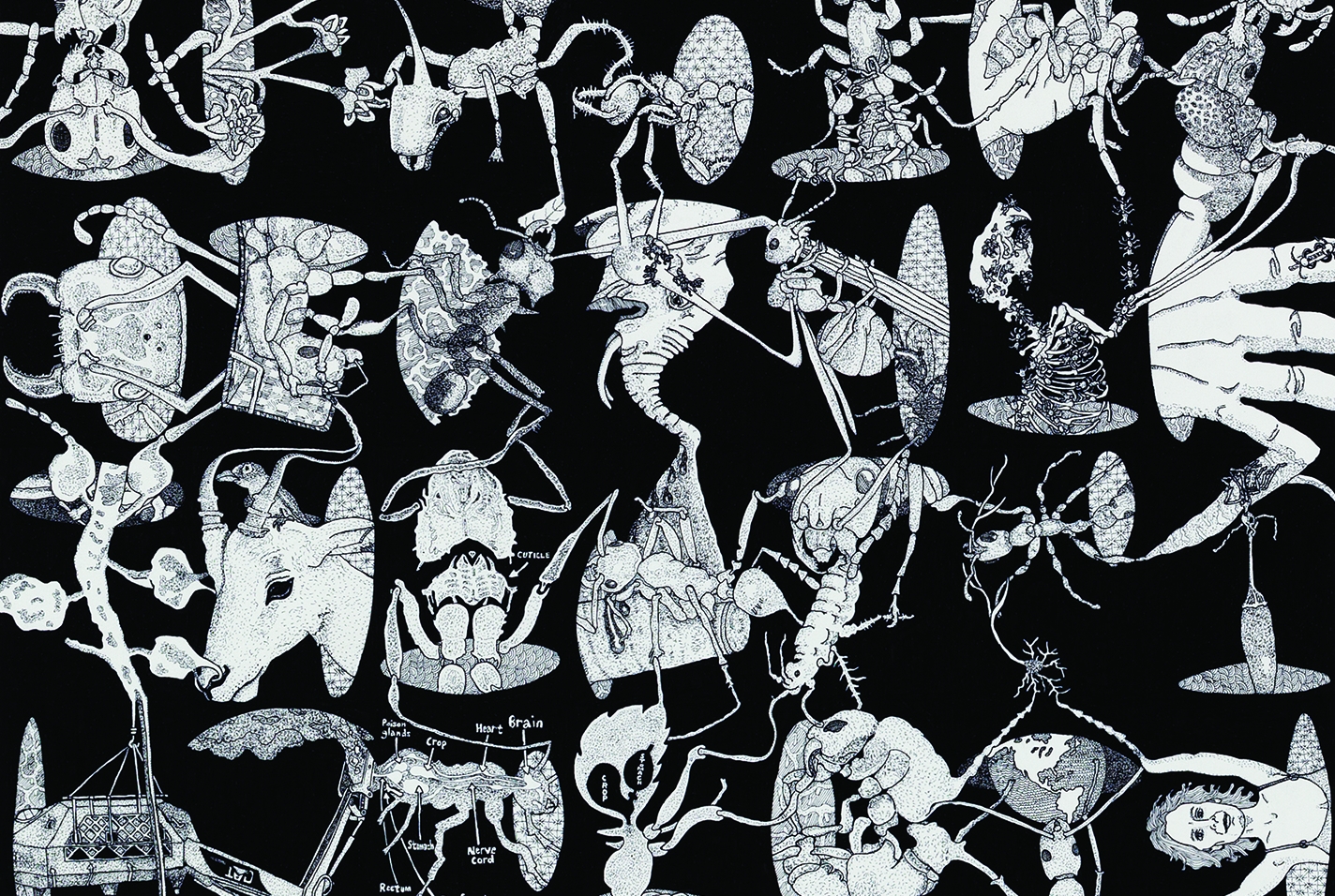Marrying art and psychiatry, Dr. Martin Wilner crafts 'portraits of a state of mind'
Every day, people tell Dr. Martin Wilner about their lives. Many are patients whom the clinical assistant professor of psychiatry sees in his practice. But each month, Dr. Wilner also invites someone — a friend, an acquaintance, even people he hasn't met in person — to communicate with him once a day via text, phone or e-mail about their thoughts and experiences. And then the self-taught artist, whose work has been exhibited in New York and London, picks up his pen and begins to draw.
Dr. Wilner describes Case Histories as "portraits of a state of mind." He organizes the images within the structure of a monthly calendar, one day's drawing connected to the next; each work in the series is named for that month's collaborator — for example, January 2014: Alexander Adler. "Over time, my work as an artist has absorbed much of what I do as a psychiatrist, particularly in psychoanalysis," he says. "My relationship with the subjects parallels the kind that one has with a patient — but for the purpose of making art, not for treating illness."The result is Case Histories, a series of drawings Dr. Wilner began in 2012. Through a process of free association, Dr. Wilner creates visual responses that interpret the subjects' input and integrate his own reactions and reflections. "My job is to accept whatever someone sends to me," says Dr. Wilner. "If what they send is, 'I had an amazing sandwich today,' I might draw a sandwich, but I probably wouldn't. I would ask myself questions. Are they making light of this process? Are they being serious and saying, 'You're not nurturing me, I have to feed myself'? Is this about who's feeding whom?"
Case Histories evolved from an ongoing project, Making History, which Dr. Wilner began in the aftermath of 9/11: over the course of a decade, he did a drawing a day in response to a news event. Dr. Wilner's work has been featured in the magazines Art in America and BOMB, and an artist's print portfolio edition of Case Histories 2012 was recently produced with the Drawing Center, a SoHo museum devoted to the medium. (Additional details are available on his website, martinwilner.com.) "I was always the student in the back of the class, drawing in my notebooks," he explains. "Since I had a dozen years of post-graduate education to become a psychiatrist, I had lots of time to refine my skills."
Dr. Wilner's fans include his colleagues in the Department of Psychiatry — ranked the best in the nation by U.S. News & World Report — where his brother, Dr. Philip Wilner, is also on the faculty. Chairman Dr. Jack Barchas, the Barklie McKee Henry Professor of Psychiatry, calls him "a modern Renaissance man who is able to think across disciplinary lines. As both an artist and a psychoanalyst, he recognizes the difficulty and the dignity of human efforts to be in the world." And in other worlds, too: for 2015–16, Dr. Wilner is serving as a virtual-artist-in- residence with the Search for Extraterrestrial Intelligence Institute (SETI), whose scientists are the subjects for his current drawings. "I find that this opportunity allows for me to expand the range of my creative inquiry," Dr. Wilner says, "which can only enrich me as an artist — and as a psychiatrist."
— C. A. Carlson
This story first appeared in Weill Cornell Medicine, Vol. 14, No.2.

